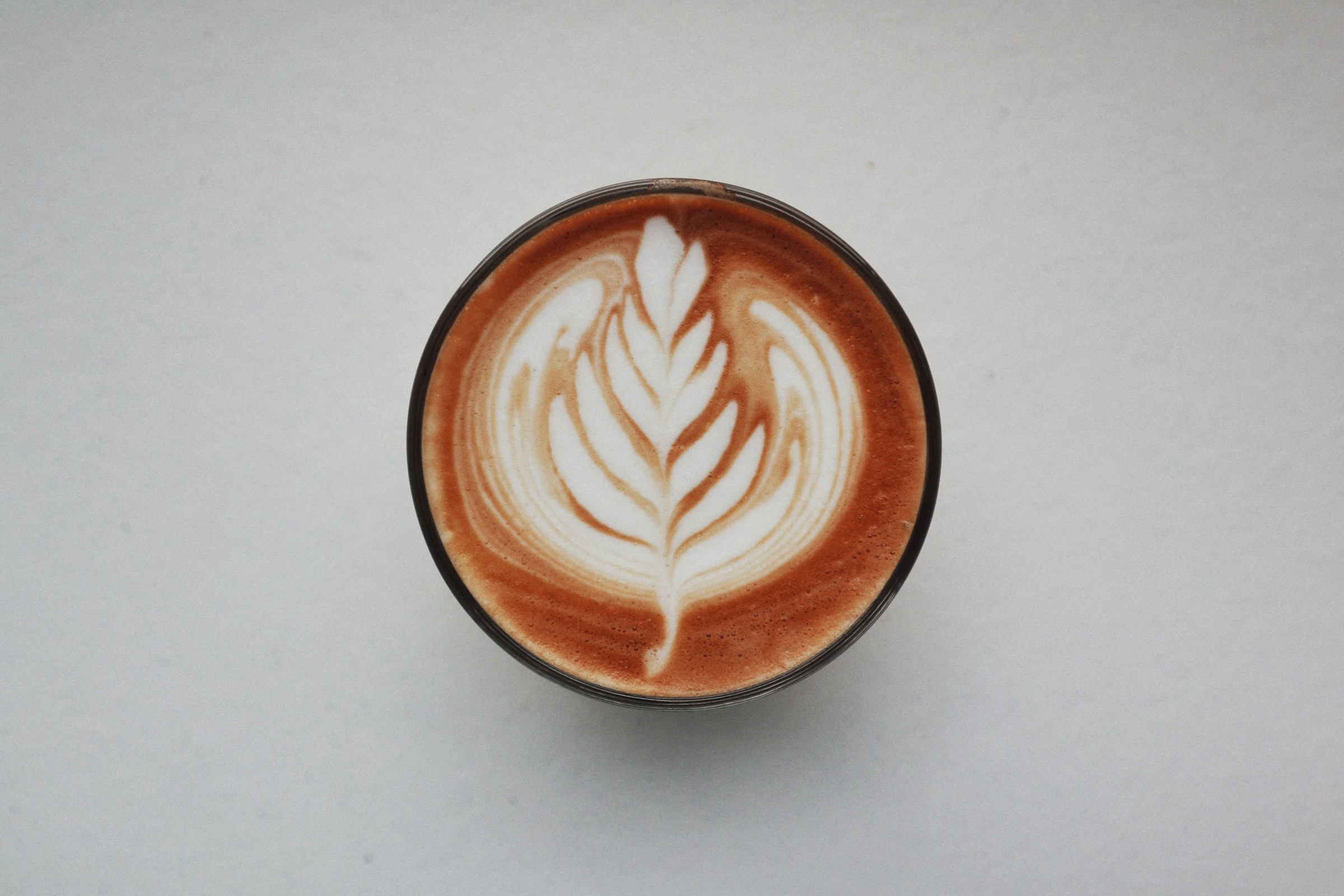Lattes are one of the most popular coffee drinks around the world.
Their creamy, rich texture and endless flavor possibilities make them a favorite for many.
But you don’t need a fancy espresso machine to enjoy a delicious latte at home.
With a few simple tools and techniques, you can create a perfect latte right in your kitchen.
Save time and money while customizing your drink to your taste.
Here’s how you can make a latte without an espresso machine.

How To Make A Latte Without A Machine: At A Glance
- Step 1: Brew the Coffee
- Step 2: Heat the Milk
- Step 3: Froth the Milk
- Step 4: Combine Coffee and Milk
- Step 5: Enjoy!
What is a Latte?

A latte is a coffee drink made with espresso, steamed milk, and a thin layer of milk foam on top.
It’s known for its smooth, creamy texture and balanced coffee flavor.
The word “latte” comes from the Italian term “caffè latte,” which means “milk coffee.”
Lattes are often confused with other coffee drinks, but there are key differences.
A cappuccino is similar but has more foamed milk than steamed milk, giving it a lighter, airier texture.
On the other hand, a macchiato is made with a shot of espresso and just a dollop of milk foam, making it much stronger in flavor.
Another common drink is the café au lait, which is made with brewed coffee instead of espresso and has steamed milk but no foam.
Each of these drinks offers a unique experience, but the latte’s creamy blend of espresso and milk makes it a popular choice for many coffee lovers.
Ingredients Needed
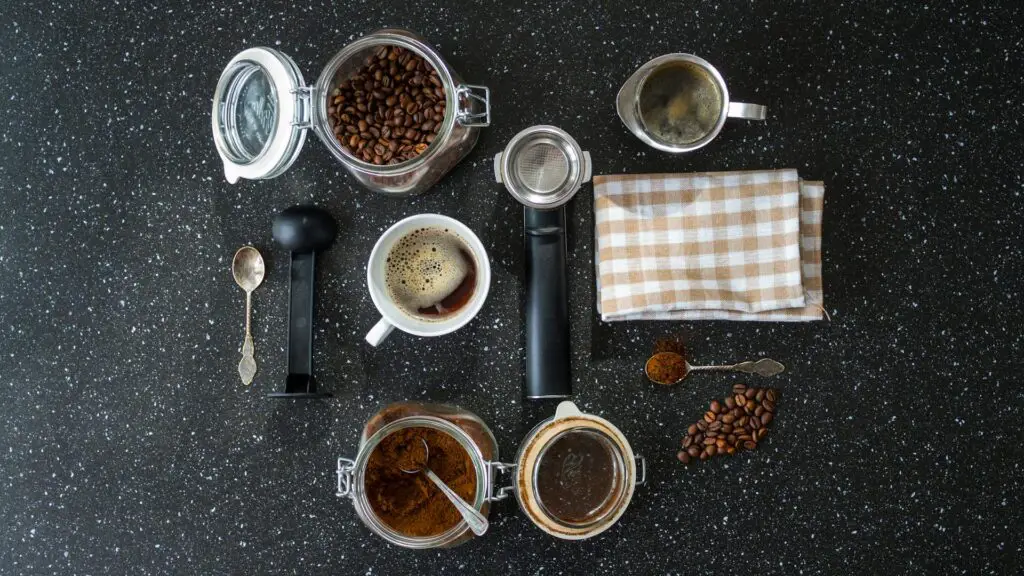
To make a delicious latte at home, you’ll need just a few simple ingredients:
- Coffee: You can use espresso if you have an AeroPress, Moka pot, or French press. If not, a strong-brewed coffee will work as a good substitute.
- Milk: Any type of milk will do. Whole milk creates the creamiest texture, but you can also use plant-based alternatives like almond, oat, or soy milk. Just keep in mind that some plant-based milks may not foam as well.
- Optional Flavorings: Add a personal touch to your latte with flavorings like vanilla, caramel, or hazelnut syrups. You can also experiment with seasonal flavors like pumpkin spice or peppermint.
Equipment Needed
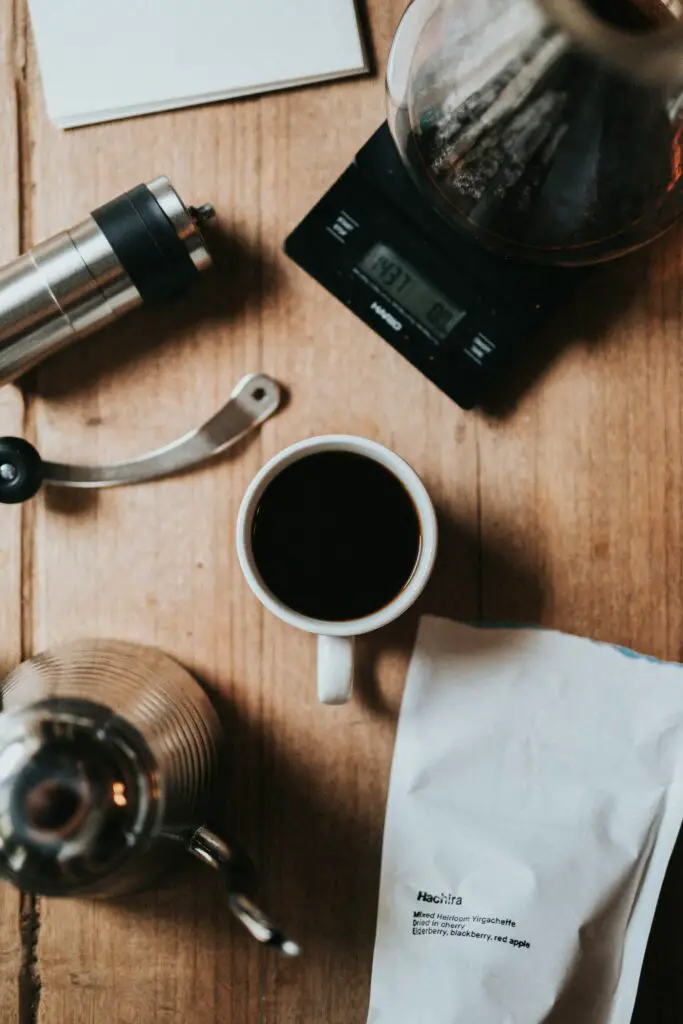
To make a latte at home, you’ll need some essential equipment:
AeroPress, Moka Pot, French Press, or Drip Coffee Maker
These tools are used to brew the coffee base for your latte.
Each has its own method, but all can produce the strong coffee needed for a great latte.
Choose the one you have or prefer to use.
Milk Frothing Tools
Frothing milk is a key part of making a latte.
You can use a handheld frother, which is easy and quick.
If you have a French press, you can also use it to froth milk by pumping the plunger up and down.
A mason jar is another simple option: shake the milk in the jar, then microwave it to set the foam.
Burr Grinder for Coffee Beans (Optional but Recommended)
A burr grinder is great for getting a consistent grind size, which is important for brewing strong coffee.
If you have whole coffee beans, grinding them fresh will enhance the flavor of your latte.
While not absolutely necessary, a burr grinder is a useful tool for coffee enthusiasts who want the best possible taste.
How to Make Espresso or Strong Coffee

Using an AeroPress
The AeroPress is a handy tool for making a concentrated coffee brew similar to espresso.
Start by grinding your coffee beans to a fine consistency.
Place a filter in the AeroPress cap and rinse it with hot water.
Add the coffee grounds to the AeroPress, then pour hot water over the grounds.
Stir for about 10 seconds, then press the plunger down slowly.
The result is a rich, strong coffee that’s perfect for a latte.
Using a Moka Pot
A Moka pot is a traditional Italian coffee maker that uses pressure to brew coffee.
Fill the bottom chamber with water up to the safety valve.
Add finely ground coffee to the filter basket without pressing it down.
Assemble the Moka pot and place it on the stove over medium heat.
As the water heats up, it will create pressure and push through the coffee grounds, producing a strong brew.
Once you hear a hissing sound, remove the Moka pot from the heat.
Using a French Press
A French press can also be used to make a strong coffee suitable for lattes.
Use a coarse grind for your coffee beans.
Add the coffee grounds to the French press and pour hot water over them.
Stir the mixture and let it steep for about 4 minutes.
Press the plunger down slowly to separate the grounds from the coffee.
This method creates a robust and full-bodied coffee.
Using a Drip Coffee Maker
If you don’t have any specialty coffee equipment, a drip coffee maker can still work.
Use a dark roast coffee and brew it at double strength.
This means using twice the amount of coffee grounds you would normally use for the same amount of water.
This method won’t produce espresso, but it will give you a strong enough brew to make a decent latte.
Make sure to clean your coffee maker regularly to maintain the best flavor.
How to Froth Milk

Handheld Frother
A handheld frother is a simple and effective tool for frothing milk.
Start by heating your milk to 140-160 degrees Fahrenheit.
Pour the heated milk into a tall container and insert the frother.
Turn it on and move it up and down until the milk is frothy.
This method is quick and creates a nice foam for your latte.
Using a French Press
You can also use a French press to froth milk.
Heat your milk as you would for any other method.
Pour the hot milk into the French press, filling it no more than halfway.
Place the lid on and pump the plunger up and down vigorously.
This motion aerates the milk, creating a thick foam.
Pour the frothed milk directly into your coffee.
Using a Mason Jar
A mason jar is an easy and accessible way to froth milk.
Pour your heated milk into the jar, making sure it’s no more than halfway full.
Screw the lid on tightly and shake the jar vigorously for about 30 seconds.
Remove the lid and microwave the jar for another 30 seconds to stabilize the foam.
The result is a simple, foamy milk ready to top your latte.
Differences Between Steamed Milk and Frothed Milk
Steamed milk is simply heated milk without much air added, resulting in a creamy texture.
Frothed milk, on the other hand, involves aerating the milk to create foam.
This foam adds a light, airy texture to your latte.
Both are essential for different parts of the latte-making process.
Best Types of Milk for Frothing
Whole milk is the best for frothing because it creates a rich and creamy foam.
However, you can also use plant-based alternatives.
Oat milk and almond milk are popular choices, but they may not produce as much foam as dairy milk.
Experiment with different types to find your preferred taste and texture.
Step-by-Step Latte-Making Process
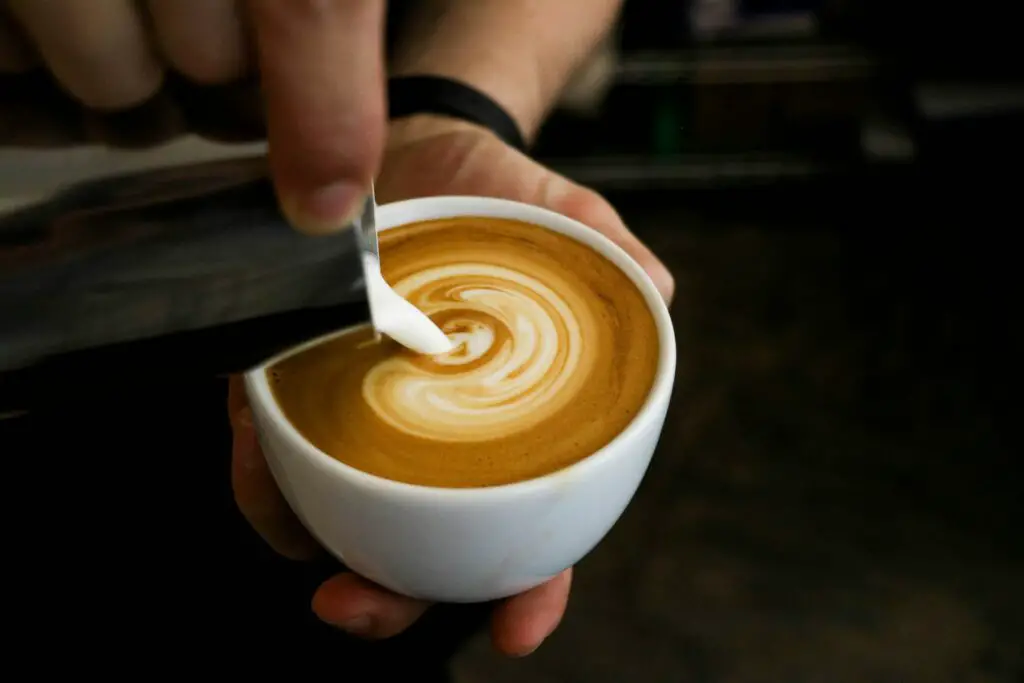
Step #1: Brew the Coffee
To make a latte, start by brewing a strong coffee or espresso.
- AeroPress: Grind your coffee beans finely and place a filter in the AeroPress cap. Add the grounds, pour hot water over them, stir for 10 seconds, and press the plunger down slowly.
- Moka Pot: Fill the bottom chamber with water, add finely ground coffee to the filter basket, and assemble the pot. Place it on the stove over medium heat until you hear a hissing sound, then remove it from the heat.
- French Press: Use coarsely ground coffee. Add the grounds to the French press, pour hot water over them, stir, and let it steep for 4 minutes. Press the plunger down slowly.
- Drip Coffee Maker: Use a dark roast coffee and brew it at double strength by using twice the amount of coffee grounds for the same amount of water.
Step #2: Heat the Milk
Heating the milk properly is essential for a good latte.
- Stovetop Method: Pour the milk into a saucepan and heat it over medium heat. Stir occasionally to prevent a skin from forming. Heat until it reaches 140-160 degrees Fahrenheit, but do not let it boil.
- Microwave Method: Pour the milk into a microwave-safe container. Heat it on high for 30-45 seconds, then check the temperature. Continue heating in 15-second intervals until it reaches 140-160 degrees Fahrenheit.
Step #3: Froth the Milk
Frothing adds the signature texture to your latte.
- Handheld Frother: Pour the heated milk into a tall container and insert the frother. Move it up and down until the milk is frothy.
- French Press: Pour the hot milk into the French press. Pump the plunger up and down vigorously until the milk is frothy.
- Mason Jar: Pour the heated milk into a mason jar, filling it halfway. Screw the lid on tightly and shake the jar for about 30 seconds. Microwave the jar for another 30 seconds to stabilize the foam.
- Stovetop Steamer: Use the steamer wand to introduce air into the milk by keeping the wand just below the surface and moving it around until the milk is frothy.
Step #4: Combine Coffee and Milk
Now it’s time to bring it all together.
- Pouring Technique: Pour the brewed coffee or espresso into your cup. Slowly add the heated milk, holding back the foam with a spoon.
- Adding Foam on Top: After pouring the milk, spoon the foam on top of the latte. This adds the final touch to your drink.
- Optional Toppings: For extra flavor, sprinkle cocoa powder, nutmeg, or cinnamon on top of the foam. You can also add flavored syrups or whipped cream if desired.
Latte Ratios and Variations
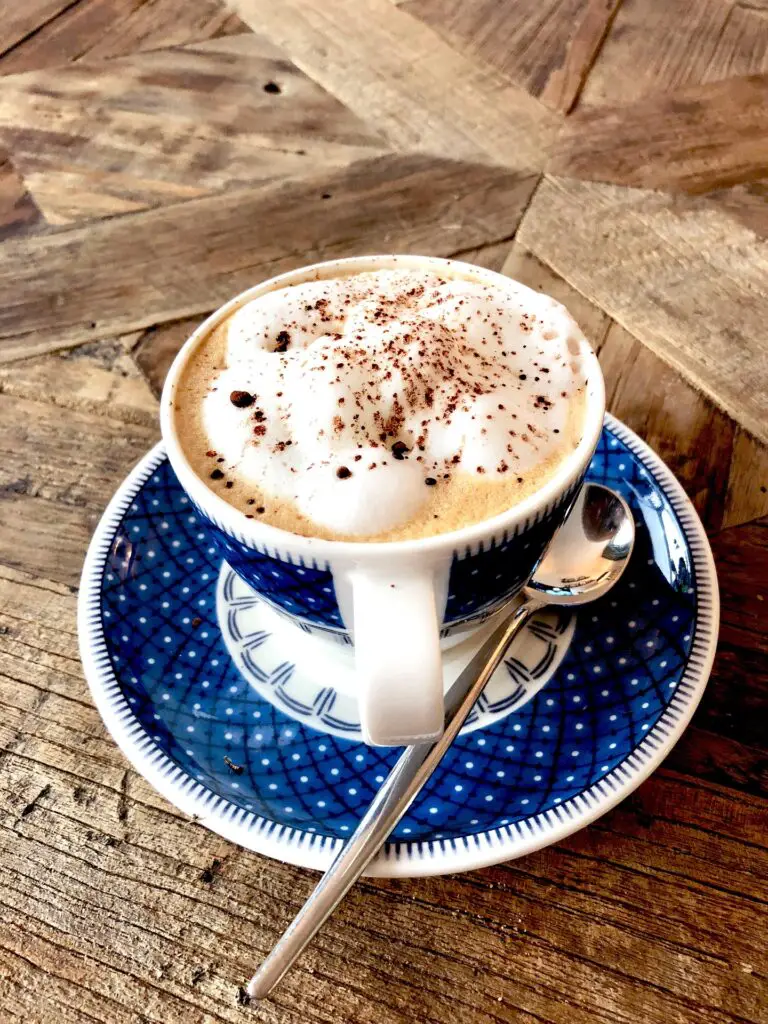
Standard Latte Ratio
A classic latte follows a simple ratio: 1 part espresso to 3 parts milk.
This balance creates a creamy, smooth drink with a strong coffee flavor.
The rich espresso blends perfectly with the steamed milk, giving you that signature latte taste.
Adjusting Ratios for Personal Preference
Everyone’s taste is different, so feel free to adjust the ratio to suit your preference.
If you prefer a stronger coffee flavor, use more espresso and less milk, like a 1:2 ratio.
For a creamier, milder taste, increase the milk, going for a 1:4 ratio. Experimenting with these adjustments helps you find your perfect balance.
Popular Latte Flavors
Adding flavors to your latte can elevate your coffee experience.
Here are some popular choices:
- Vanilla Latte: Add a splash of vanilla syrup to your latte for a sweet, aromatic twist.
- Mocha Latte: Mix in chocolate syrup or cocoa powder for a rich, chocolatey flavor.
- Caramel Latte: Drizzle caramel sauce into your latte for a sweet, buttery taste.
- Seasonal Flavors: Enjoy lattes with flavors like pumpkin spice in the fall or peppermint in the winter. These seasonal variations add a festive touch to your coffee routine.
Dairy-Free and Vegan Latte Options
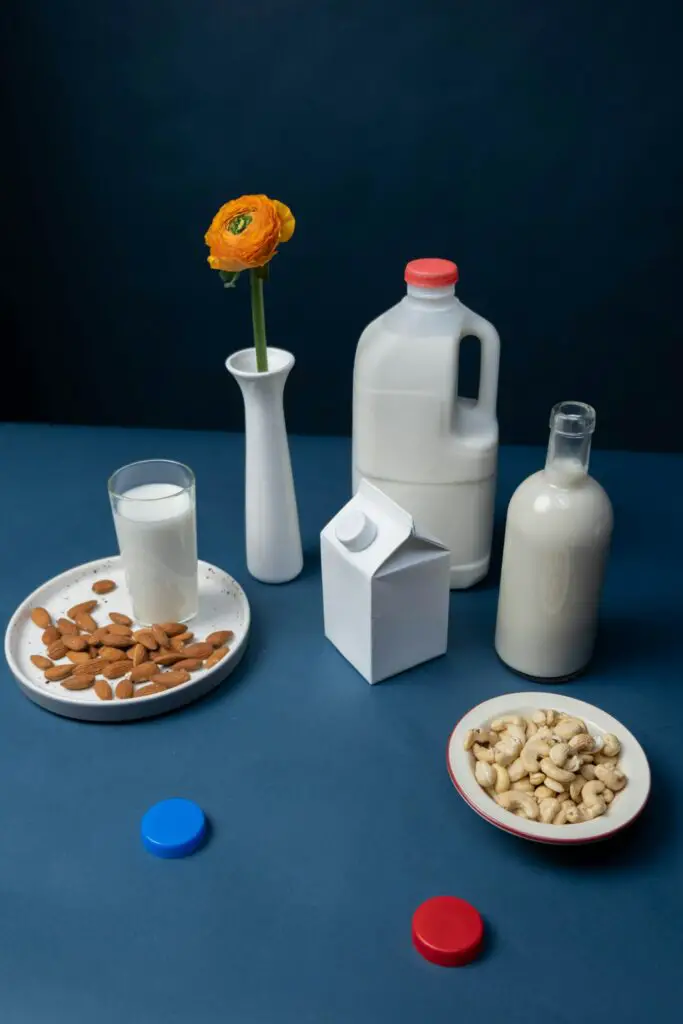
Best Plant-Based Milks for Lattes
Plant-based milks offer great alternatives for dairy-free and vegan lattes.
Some of the best options include:
- Almond Milk: Light and slightly nutty, almond milk froths well and complements the coffee flavor.
- Soy Milk: Rich and creamy, soy milk is a popular choice that froths nicely and offers a smooth texture.
- Oat Milk: Naturally sweet and creamy, oat milk froths excellently and blends seamlessly with coffee.
- Coconut Milk: Adds a tropical twist with its mild coconut flavor, though it can be thinner than other options.
- Cashew Milk: Creamy and slightly sweet, cashew milk froths decently and provides a rich texture.
Tips for Frothing Plant-Based Milks
Frothing plant-based milks can be slightly different from frothing dairy milk.
Here are some tips to achieve the best results:
- Chill Your Milk: Cold plant-based milk froths better, so keep it refrigerated until you’re ready to use it.
- Use Fresh Milk: Freshly opened plant-based milk tends to froth better than milk that’s been open for a while.
- Choose Barista Versions: Many brands offer “barista” versions of their plant-based milks, specifically formulated to froth and steam well.
- Don’t Overheat: Heat your milk to about 150°F (65°C). Overheating can cause plant-based milks to break down and lose their frothiness.
- Frothing Techniques: Use a handheld frother, French press, or steam wand for the best froth. Each method can produce a good foam if done correctly.
Tips and Tricks for the Perfect Homemade Latte

Cleaning and Maintaining Your Equipment
Keeping your coffee-making equipment clean is crucial for the best-tasting lattes.
After each use, rinse your AeroPress, Moka Pot, French Press, or drip coffee maker with warm water.
Use a mild detergent to remove any coffee oils and residue that can build up over time.
For your milk frothing tools, ensure they are thoroughly cleaned to avoid milk residue, which can affect the taste and texture of your froth.
Regularly descaling your equipment will also help maintain its performance and longevity.
Experimenting with Different Coffee Beans and Grinds
The type of coffee beans and grind size can significantly impact your latte’s flavor.
Experiment with different beans, from light to dark roasts, to find your preferred taste.
Lighter roasts offer a more acidic and fruity flavor, while darker roasts provide a richer, more robust profile.
The grind size also matters.
For AeroPress, a fine to medium grind works best.
For Moka Pot and French Press, use a medium to coarse grind.
Adjusting these variables can help you perfect your homemade latte.
Customizing Your Latte with Syrups and Spices
Personalize your latte by adding syrups and spices.
As mentioned earlier, Vanilla, caramel, and hazelnut syrups are popular choices that add a sweet and flavorful twist to your drink.
You can also use natural sweeteners like honey or maple syrup.
Spices like cinnamon, nutmeg, and cocoa powder can be sprinkled on top of the foam for an extra layer of flavor.
Experiment with different combinations to discover your favorite custom latte.
Conclusion
Making a latte at home is a fun and rewarding experience.
Experiment with different methods and flavors to find what you love.
Enjoy the benefits of customizing your drink to your taste and saving money.
With a little practice, you can create delicious lattes without an espresso machine.
Start exploring and enjoy your perfect homemade latte today!


